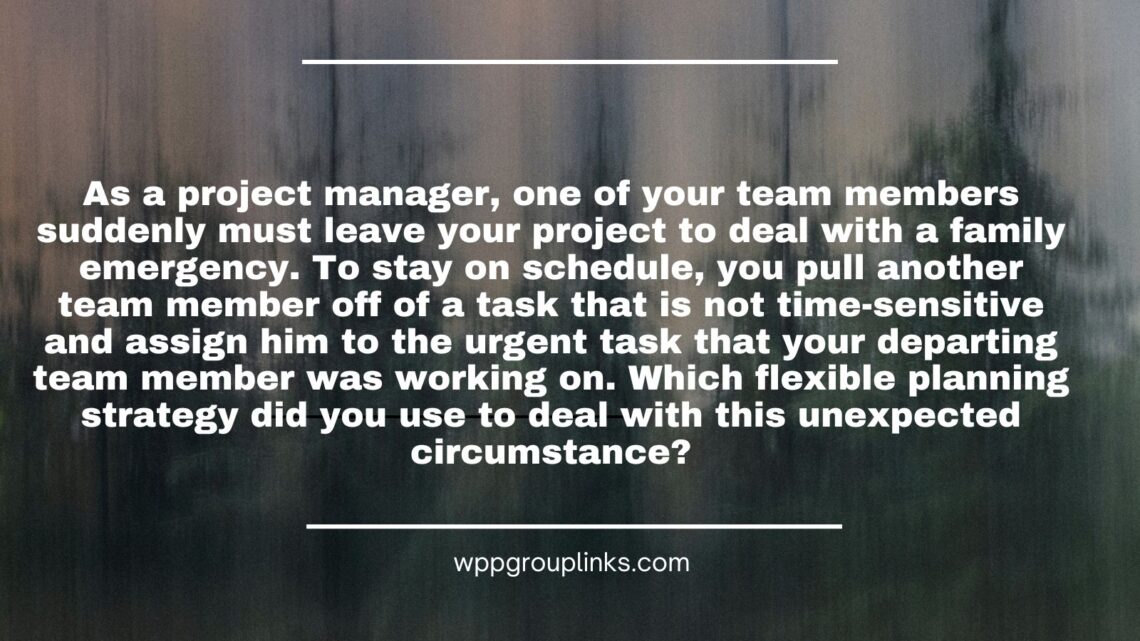
Q: As a project manager, one of your team members suddenly must leave your project to deal with a family emergency. To stay on schedule, you pull another team member off of a task that is not time-sensitive and assign him to the urgent task that your departing team member was working on. Which flexible planning strategy did you use to deal with this unexpected circumstance?
or
Q: One of your team members unexpectedly has to quit your project as a project manager to attend to a family emergency. In order to maintain timeliness, you transfer one team member from a non-urgent assignment to the urgent one your leaving colleague was working on. Which adaptable planning technique did you use to handle this unforeseen situation?
- Enabling decision-making
- Assessing external constraints
- Planning for risks and challenges
- Calculating “float” in your schedule.
Explanation: In this scenario, you choose to implement the adaptable planning method known as “Resource Reallocation” or “Resource Levelling.” You are dynamically shifting your resources to deal with unforeseen events and situations when you move a member of your team from a job that is not time-sensitive to one that is urgent, for example, because of a family emergency. This method helps guarantee that key tasks are done immediately, especially in the face of unanticipated circumstances, and contributes to keeping the project schedule. It also helps ensure that the project will be completed on time.





